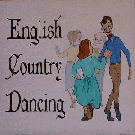User Tools
Sidebar
Dance Laptop
A number of callers are beginning to use laptops with powered speakers to provide recorded music for dancing. This page is intended to suggest and share ideas on making this work well.
In the OECDC we have tried 4 systems, but two are very similar and will be lumped together.
- Asus Eee PCs: We have tried the model 701 and model 900. These are very small, light PCs, weighing less than a kilogram. The 701 has a 7“ screen, while the 900 has a 9” screen. Both initially ran Xandros Linux, but since have used CrunchBang Linux and Lubuntu.
- An old HP ze4540ca laptop (256MB RAM, 40GB hard drive, no wireless networking, DVD ROM/CDRW combo drive). This machine was purchased in Dec. 2003 and was old enough that I felt comfortable letting it be lugged around to the dances. It was quite heavy. Eventually, components failed and it was decommissioned.
- As at 2009-12-14, we acquired a Acer 5534 laptop. The link below tells how the software was set up.
All laptops are general-purpose machines. That is their strength and downfall. I have tried to configure a system with minimal controls.
We also want to be able to easily update the content from the macnash playford site to the laptops. That is, we want to be able to play new tunes!
DanceBox live-USB
Linux, being open source, is happy to allow copying of the operating system software. This allows what is called a live-CD or live-USB. This is a storage medium that can be “booted” on a computer and runs in memory without touching the main drive. John Nash has created two versions of this, one in 2012 and one in 2016. The 2012 version performed well, but lacked drivers for a new laptop acquired by George Cherepon of the Ogdensburg group. Building a live-USB is not terribly difficult, but does require a great deal of attention to detail and a lot of tedious busy-work. A draft report on how the 2016 live-USB and its design considerations is dmasterusb.pdf.
The bootable ISO file is located on this server at http://ottawaenglishdance.org/main/live-image/DMaster.iso
To use the live-USB, download the ISO file. It can actually be “burned” to a DVD (the file is just a little too large for a CD), then “booted” on a machine with a drive attached (even an external one). Typically you need to hit F12 or some other key right after switching on to be able to select the CD/DVD drive as the source.
To put the system on a USB, I have used Unetbootin software, but there are a number of others. All have their fans and detractors. I was able to load the USB (formatted FAT32), then use gparted to shrink the DanceBox partition (I labelled it when formatting) to about 1 GB. Then I created a second partition (also FAT32) called DMusic and copied dance instructions (plain .txt) and music (.mp3) in that partition. I did not copy music into the DanceBox partition where there is just 1 sample text and 1 sample music file.
All this is relatively straightforward for someone used to formatting and managing disks and storage devices. However, I fully expect to hear from others by email (nashjc _at_ uottawa.ca). — nashjc 2016/06/24 14:43


